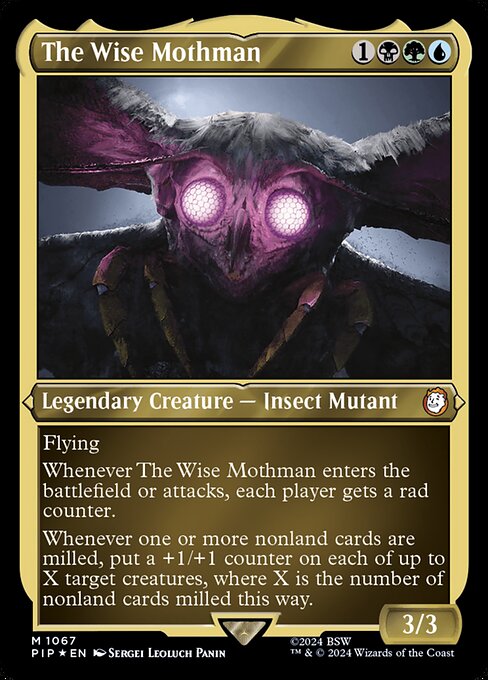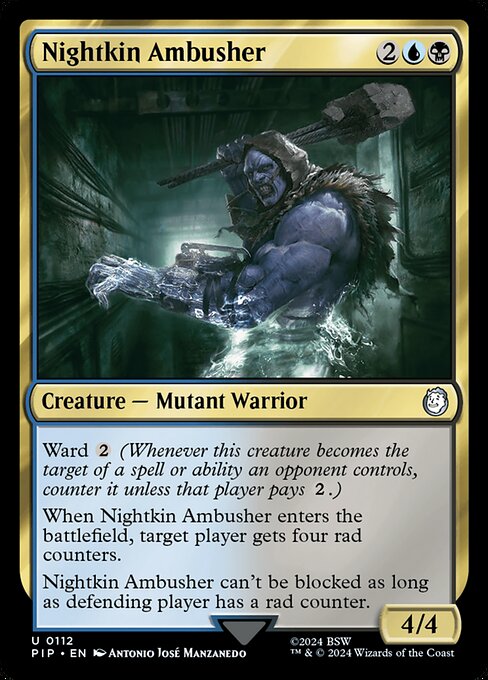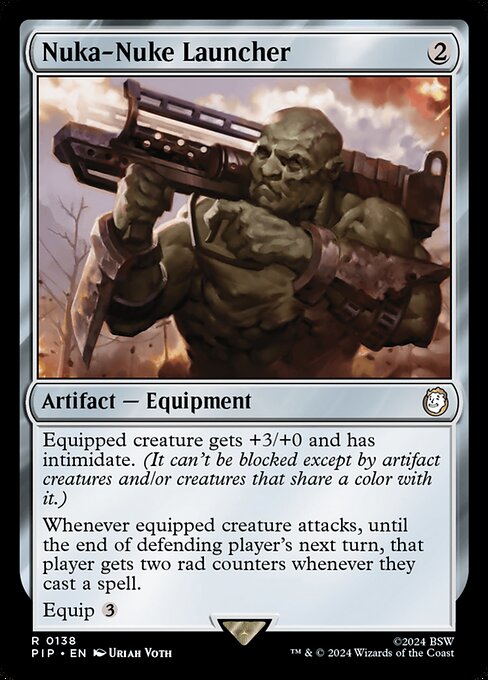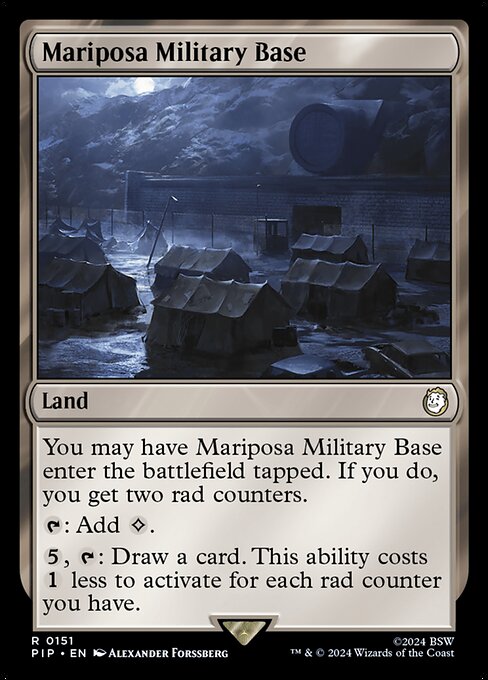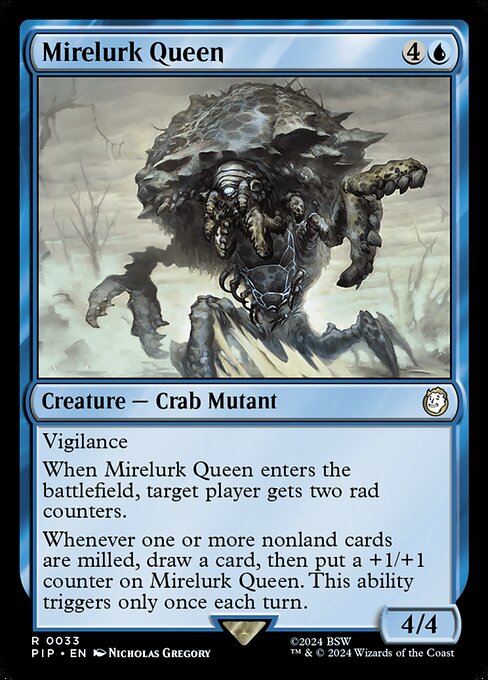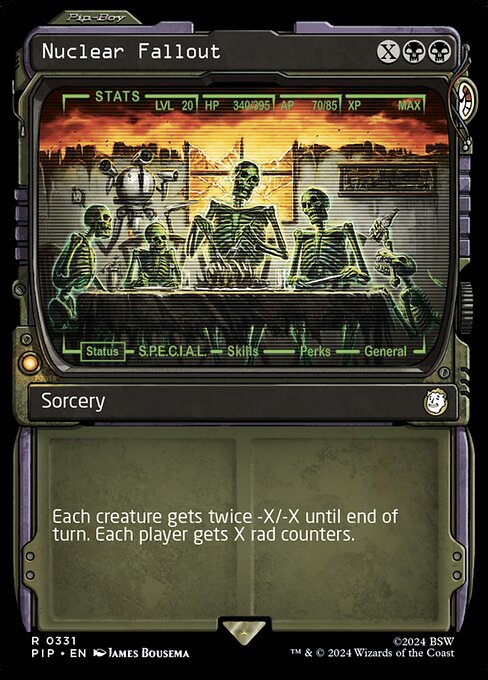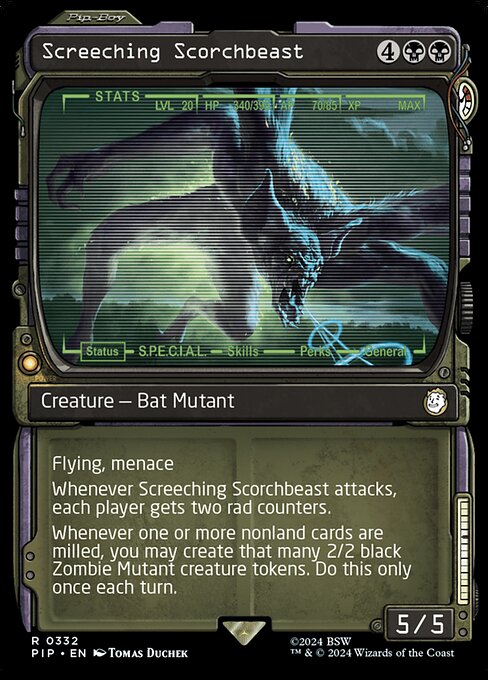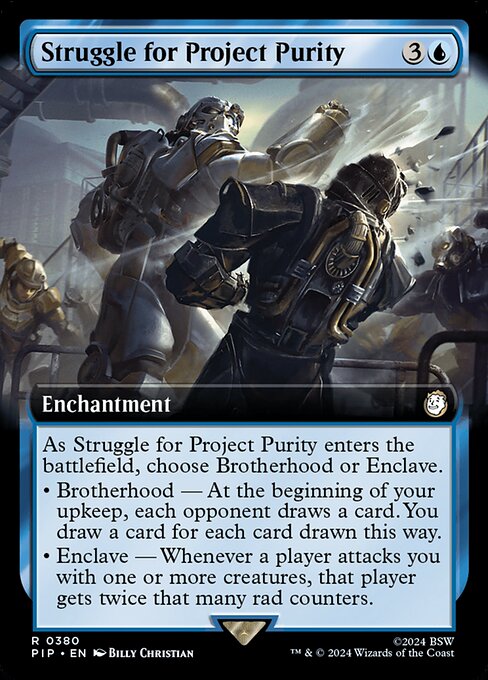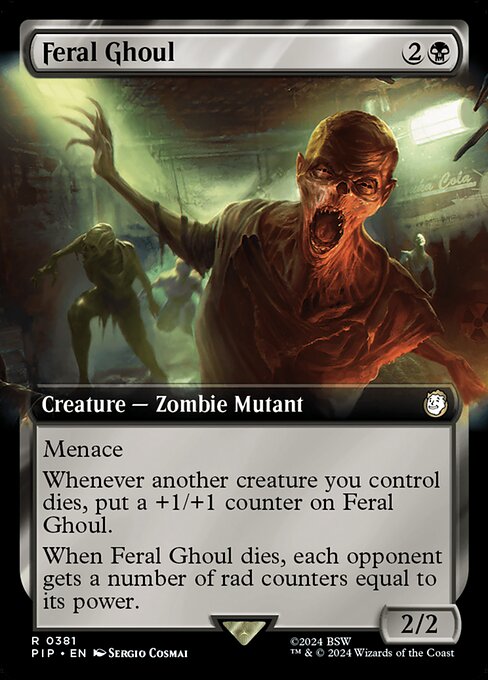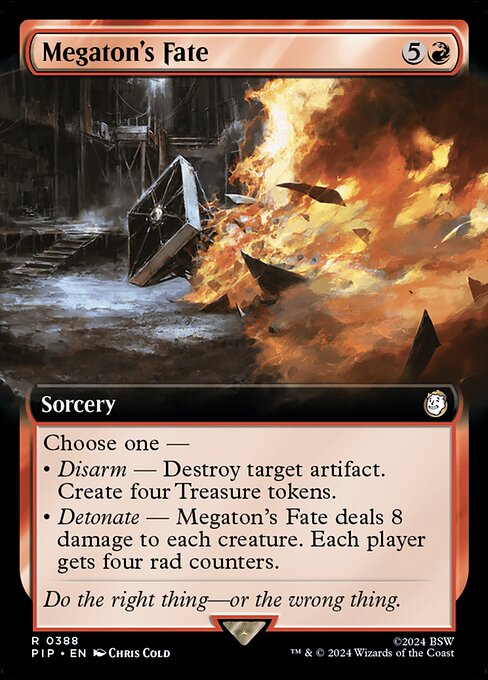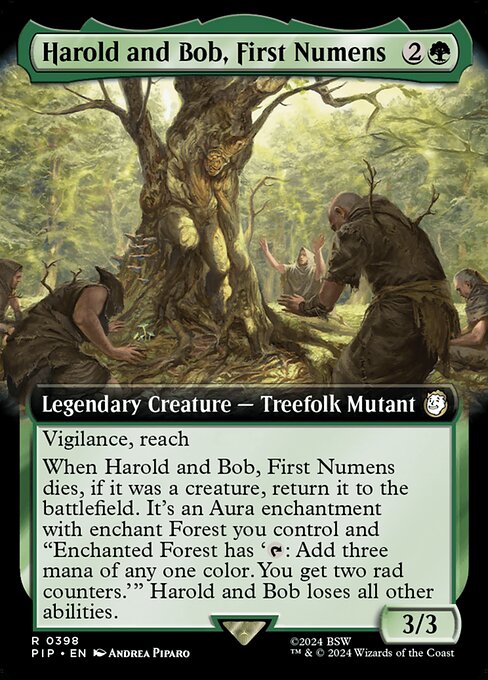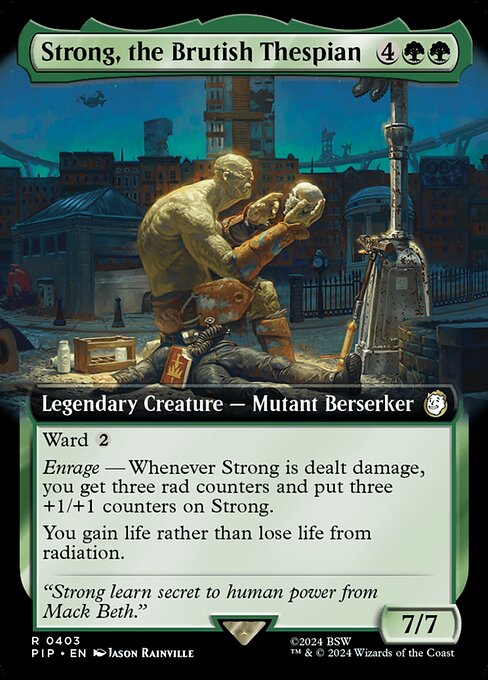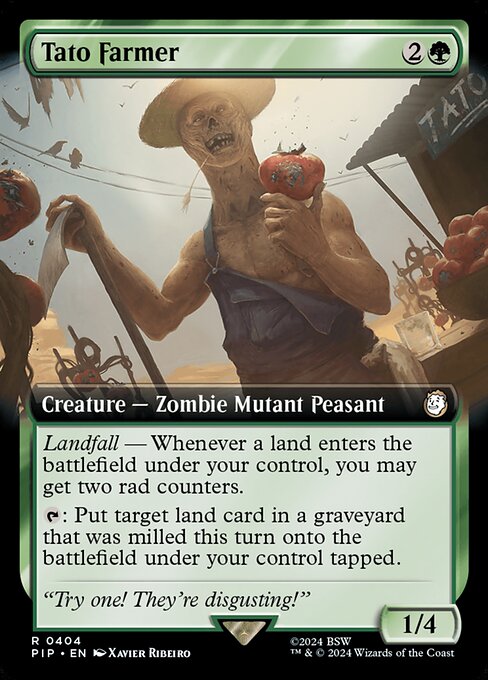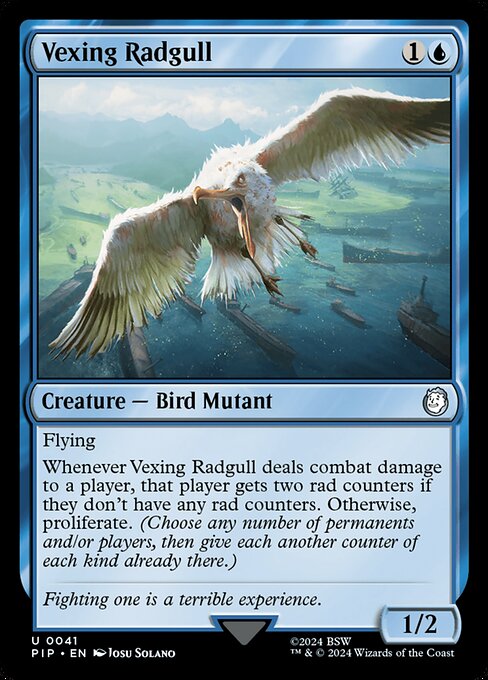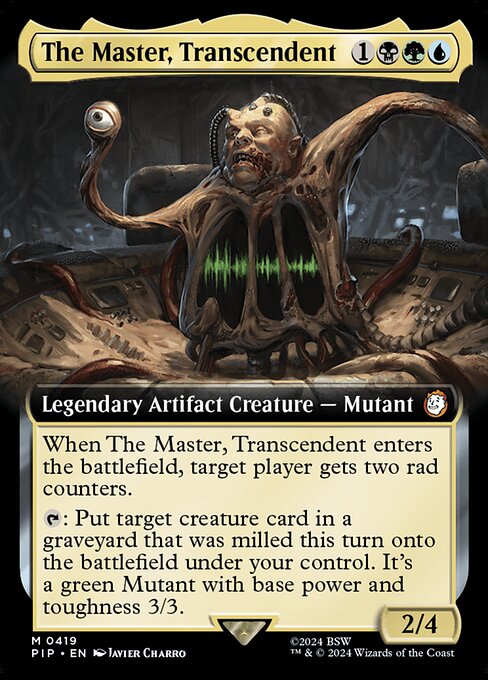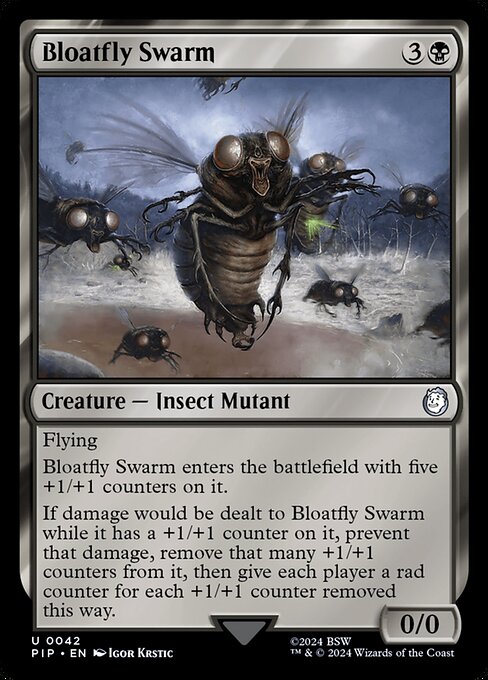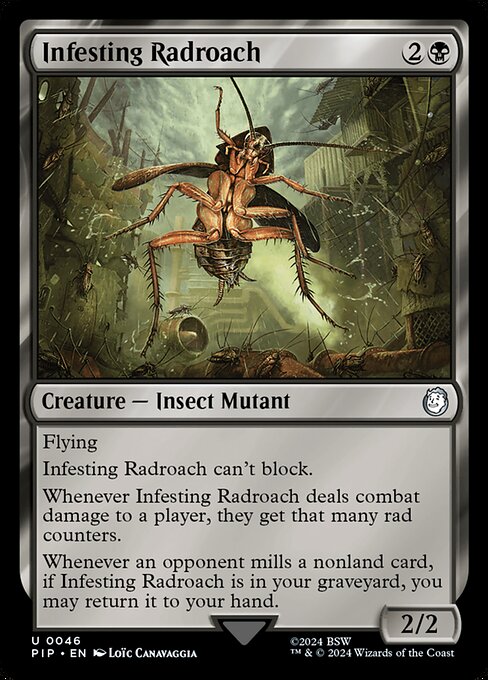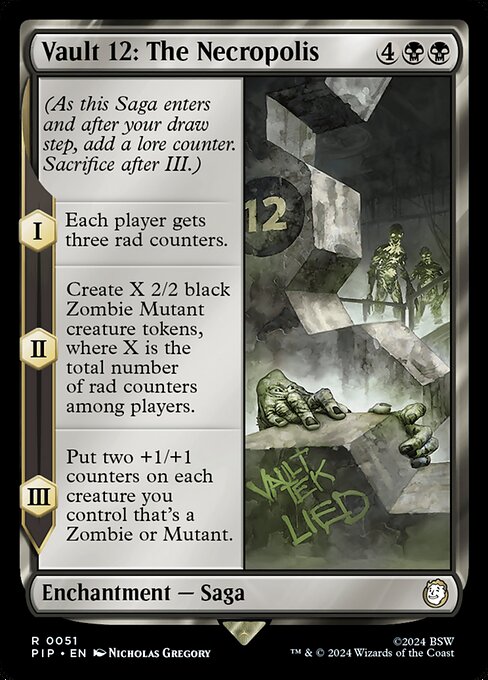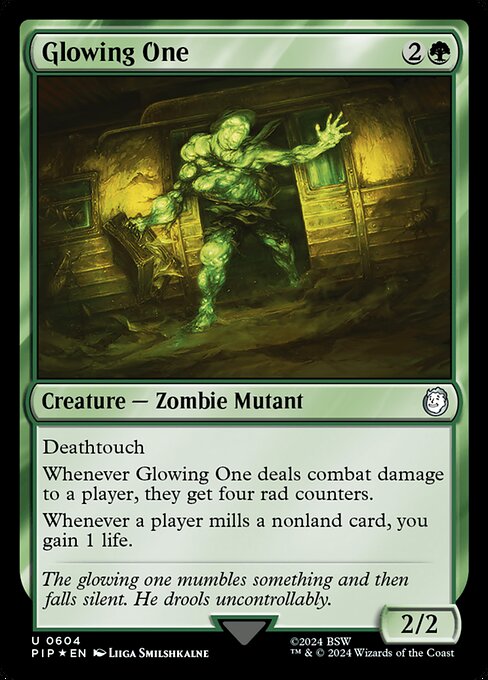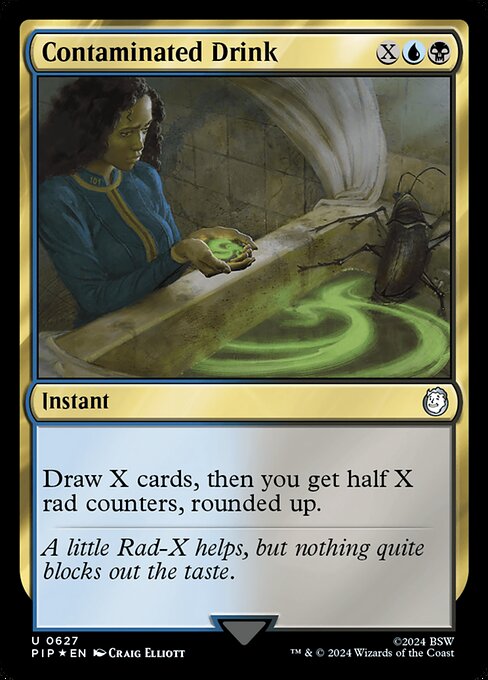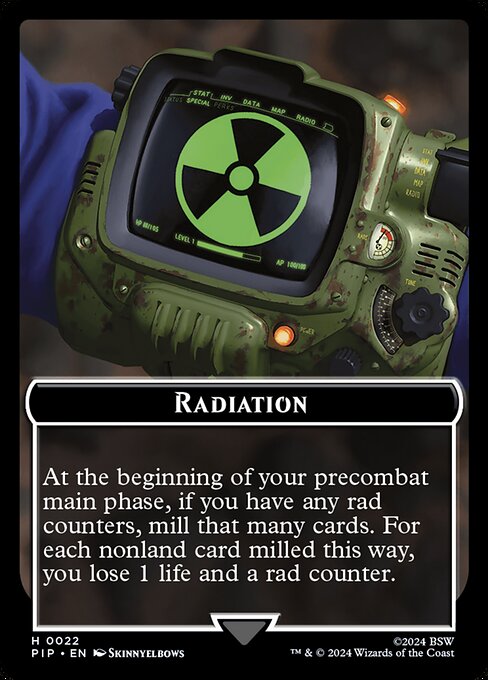standard
future
historic
gladiator
pioneer
explorer
modern
legacy
pauper
vintage
penny
commander
brawl
alchemy
paupercommander
duel
oldschool
premodern
Rulings
If, during a player’s declare attackers step, a creature that player controls that’s been goaded is tapped, is affected by a spell or ability that says it can’t attack, or hasn’t been under that player’s control continuously since the turn began (and doesn’t have haste), then it doesn’t attack. If there’s a cost associated with having a creature attack a player, its controller isn’t forced to pay that cost, so it doesn’t have to attack that player.
Keep track of how many rad counters each player has. Potential ways to track this include writing them down on paper or using dice, but any method that is clear and mutually agreeable is fine.
There is an inherent triggered ability associated with having rad counters. This triggered ability has no source and is controlled by the active player. The full text of this ability is “At the beginning of the precombat main phase of a player with rad counters, that player mills cards equal to the number of rad counters they have. For each nonland card milled this way, that player loses 1 life and removes one rad counter from themselves.”
In a game using the shared team turns option, such as an Archenemy or Two-Headed Giant game, the inherent triggered ability associated with rad counters triggers once for each player on the active team that has rad counters. Each instance of that ability is controlled by one of those players.
Being goaded isn’t an ability the creature has. Once it’s been goaded, it must attack as detailed above even if it loses all abilities.
Attacking with a goaded creature doesn’t cause it to stop being goaded. If there is an additional combat phase that turn, or if another player gains control of it before it stops being goaded, it must attack again if able.
Rad counters don’t go away as steps, phases, or turns end. They only go away when an effect instructs a player to remove rad counters from themselves.
Any effects (such as proliferate) that interact with counters a player gets, has, or loses can interact with rad counters.
Rad counters are a kind of counter that a player may have. They’re not associated with any specific permanents.
The cards are milled all at once, which means abilities that trigger “whenever one or more nonland cards are milled” will trigger exactly once as long as at least one nonland card was milled.
If the creature doesn’t meet any of the above exceptions and can attack, it must attack a player other than the controller of the spell or ability that goaded it if able. If the creature can’t attack any of those players but could otherwise attack, it must attack a planeswalker an opponent controls, a battle an opponent protects, or the player that goaded it.
If a player has fewer cards remaining in their library than the number of rad counters they have when the triggered ability resolves, they’ll mill as many cards as they can.
Keep track of how many rad counters each player has. Potential ways to track this include writing them down on paper or using dice, but any method that is clear and mutually agreeable is fine.
There is an inherent triggered ability associated with having rad counters. This triggered ability has no source and is controlled by the active player. The full text of this ability is “At the beginning of the precombat main phase of a player with rad counters, that player mills cards equal to the number of rad counters they have. For each nonland card milled this way, that player loses 1 life and removes one rad counter from themselves.”
In a game using the shared team turns option, such as an Archenemy or Two-Headed Giant game, the inherent triggered ability associated with rad counters triggers once for each player on the active team that has rad counters. Each instance of that ability is controlled by one of those players.
Being goaded isn’t an ability the creature has. Once it’s been goaded, it must attack as detailed above even if it loses all abilities.
Attacking with a goaded creature doesn’t cause it to stop being goaded. If there is an additional combat phase that turn, or if another player gains control of it before it stops being goaded, it must attack again if able.
Rad counters don’t go away as steps, phases, or turns end. They only go away when an effect instructs a player to remove rad counters from themselves.
Any effects (such as proliferate) that interact with counters a player gets, has, or loses can interact with rad counters.
Rad counters are a kind of counter that a player may have. They’re not associated with any specific permanents.
The cards are milled all at once, which means abilities that trigger “whenever one or more nonland cards are milled” will trigger exactly once as long as at least one nonland card was milled.
If the creature doesn’t meet any of the above exceptions and can attack, it must attack a player other than the controller of the spell or ability that goaded it if able. If the creature can’t attack any of those players but could otherwise attack, it must attack a planeswalker an opponent controls, a battle an opponent protects, or the player that goaded it.
If a player has fewer cards remaining in their library than the number of rad counters they have when the triggered ability resolves, they’ll mill as many cards as they can.
Rulings
If, during a player’s declare attackers step, a creature that player controls that’s been goaded is tapped, is affected by a spell or ability that says it can’t attack, or hasn’t been under that player’s control continuously since the turn began (and doesn’t have haste), then it doesn’t attack. If there’s a cost associated with having a creature attack a player, its controller isn’t forced to pay that cost, so it doesn’t have to attack that player.
Keep track of how many rad counters each player has. Potential ways to track this include writing them down on paper or using dice, but any method that is clear and mutually agreeable is fine.
There is an inherent triggered ability associated with having rad counters. This triggered ability has no source and is controlled by the active player. The full text of this ability is “At the beginning of the precombat main phase of a player with rad counters, that player mills cards equal to the number of rad counters they have. For each nonland card milled this way, that player loses 1 life and removes one rad counter from themselves.”
In a game using the shared team turns option, such as an Archenemy or Two-Headed Giant game, the inherent triggered ability associated with rad counters triggers once for each player on the active team that has rad counters. Each instance of that ability is controlled by one of those players.
Being goaded isn’t an ability the creature has. Once it’s been goaded, it must attack as detailed above even if it loses all abilities.
Attacking with a goaded creature doesn’t cause it to stop being goaded. If there is an additional combat phase that turn, or if another player gains control of it before it stops being goaded, it must attack again if able.
Rad counters don’t go away as steps, phases, or turns end. They only go away when an effect instructs a player to remove rad counters from themselves.
Any effects (such as proliferate) that interact with counters a player gets, has, or loses can interact with rad counters.
Rad counters are a kind of counter that a player may have. They’re not associated with any specific permanents.
The cards are milled all at once, which means abilities that trigger “whenever one or more nonland cards are milled” will trigger exactly once as long as at least one nonland card was milled.
If the creature doesn’t meet any of the above exceptions and can attack, it must attack a player other than the controller of the spell or ability that goaded it if able. If the creature can’t attack any of those players but could otherwise attack, it must attack a planeswalker an opponent controls, a battle an opponent protects, or the player that goaded it.
If a player has fewer cards remaining in their library than the number of rad counters they have when the triggered ability resolves, they’ll mill as many cards as they can.
Keep track of how many rad counters each player has. Potential ways to track this include writing them down on paper or using dice, but any method that is clear and mutually agreeable is fine.
There is an inherent triggered ability associated with having rad counters. This triggered ability has no source and is controlled by the active player. The full text of this ability is “At the beginning of the precombat main phase of a player with rad counters, that player mills cards equal to the number of rad counters they have. For each nonland card milled this way, that player loses 1 life and removes one rad counter from themselves.”
In a game using the shared team turns option, such as an Archenemy or Two-Headed Giant game, the inherent triggered ability associated with rad counters triggers once for each player on the active team that has rad counters. Each instance of that ability is controlled by one of those players.
Being goaded isn’t an ability the creature has. Once it’s been goaded, it must attack as detailed above even if it loses all abilities.
Attacking with a goaded creature doesn’t cause it to stop being goaded. If there is an additional combat phase that turn, or if another player gains control of it before it stops being goaded, it must attack again if able.
Rad counters don’t go away as steps, phases, or turns end. They only go away when an effect instructs a player to remove rad counters from themselves.
Any effects (such as proliferate) that interact with counters a player gets, has, or loses can interact with rad counters.
Rad counters are a kind of counter that a player may have. They’re not associated with any specific permanents.
The cards are milled all at once, which means abilities that trigger “whenever one or more nonland cards are milled” will trigger exactly once as long as at least one nonland card was milled.
If the creature doesn’t meet any of the above exceptions and can attack, it must attack a player other than the controller of the spell or ability that goaded it if able. If the creature can’t attack any of those players but could otherwise attack, it must attack a planeswalker an opponent controls, a battle an opponent protects, or the player that goaded it.
If a player has fewer cards remaining in their library than the number of rad counters they have when the triggered ability resolves, they’ll mill as many cards as they can.
Your collection? Your decks?
Want to manage your collection and/or create decks?
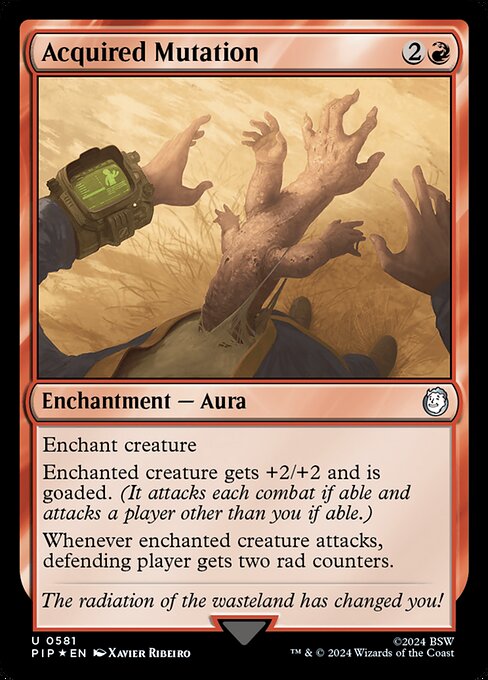

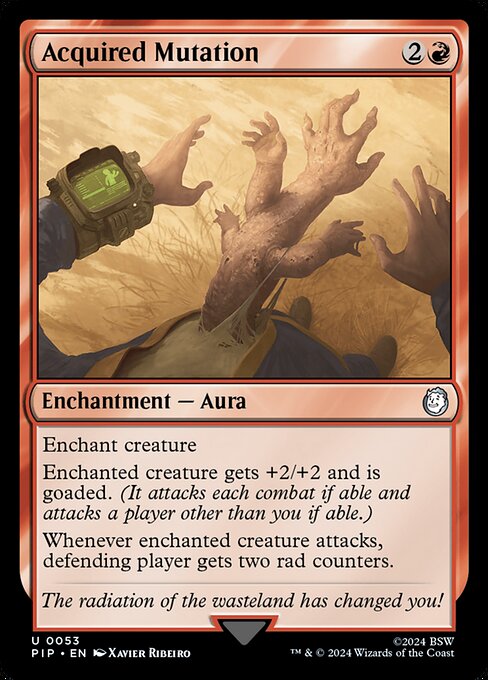
 0
0
 0.18€
0.18€
